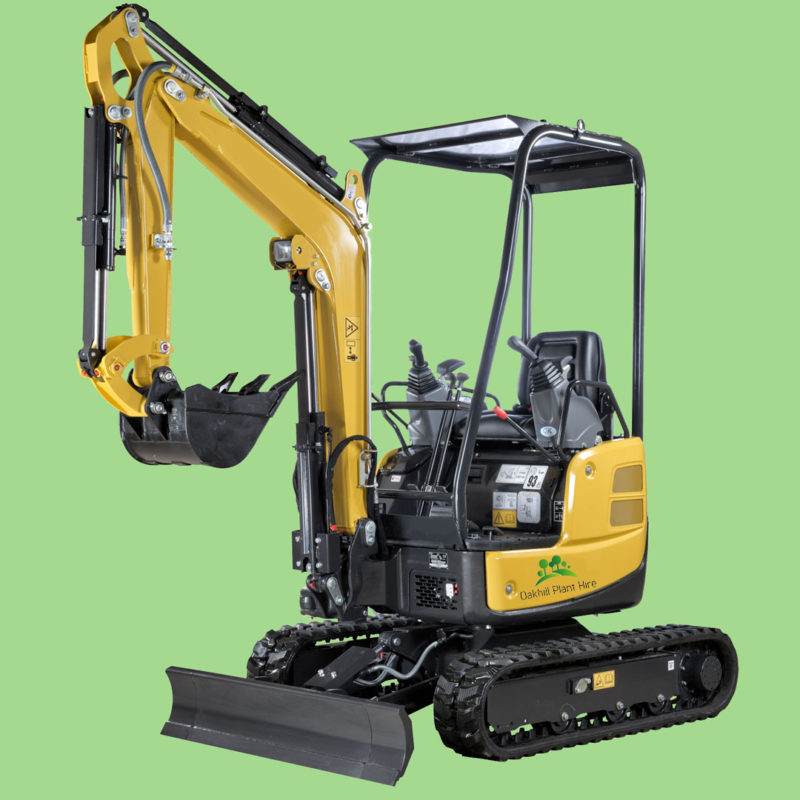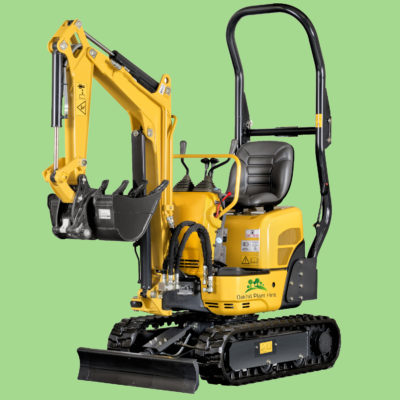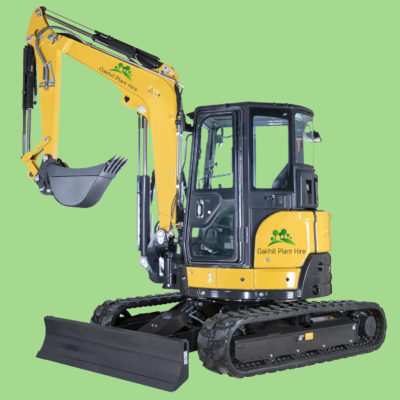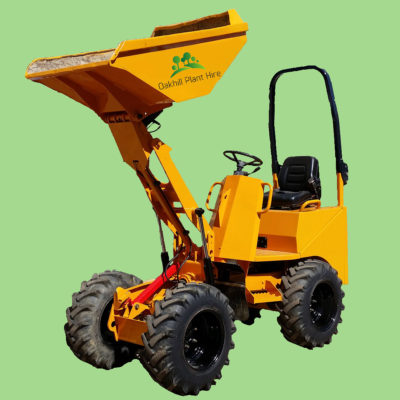Micro, mini, midi and standard excavators are all variations on the same machines, so why do we need these different classes? The differences between the categories is largely down to the weight of the machine. In this series we take a look at some of these categories to establish the differences between the machines to help you decide which is the right one for you, whether you are looking to buy or hire.
Below, we take a look at some of the features of a mini digger.
Mini or compact excavators are becoming increasingly popular in the construction industry thanks to their ability to work and manoeuvre in tight spaces that larger excavators cannot reach. A mini digger is classed by the Association of Equipment Manufacturers (AEM) as any machine up to 6 metric tons in weight.
With excellent versatility and ease of use, mini diggers are popular hire machines with contractors from all different backgrounds. Their uses can include utility trenching, concrete removal, tree planting, light demolition, home repair and renovation, but this list is seemingly never ending!
Origins
Whilst mini diggers may be a common sight in the construction industry today, they are a relatively new development, with the 50th anniversary of the mini digger being celebrated in 2018. This first machine, designed in 1968, was the work of Yanmar to meet the demand for smaller machines to increase efficiency on construction sites in Japan. Known as the Yanmar YNB300, this machine may have been the first mini digger, but it was closely followed by machines from Takeuchi in 1971.
By the 1990s, mini diggers were becoming increasing popular with hire companies, as many contractors were looking to try out these smaller machines before buying one themselves.
The Machines
Much like their larger counterparts, mini excavators are comprised of a tracked or wheeled undercarriage or chassis, a cab, and a boom extension with a bucket attachment. Modern mini diggers often come with a retractable undercarriage, meaning tracks can be expanded and retracted to allow the machines to fit through tighter spaces.
Weight
One of the advantages of the mini excavator is its size, with machines weighing anything up to 6 tons. It is this weight, or lack of it compared to larger machines, that allows mini diggers to be so versatile. As the machines are so much lighter, they are able to work on different types of sensitive terrain and will ultimately cause less ground damage than their larger counterparts. The lighter the machine, the more adaptable it becomes when working on soft, wet ground which heavier machines cannot work on. As well as operating advantages, the weight of these machines means they are easy to transport, which makes them especially popular in the hire industry as delivery costs are often much lower than with larger machines.
Dig Depth
As with all machines, the dig depth capable varies between models, with some machines limited to 1.2m whilst others are capable of depths of 3.7m. The average digging depth for a mini excavator is approximately 3m, which allows the machines to be used in a number of projects including residential construction. Mini diggers are particularly popular with utility companies as most utility digging is less than 1.5m.
Zero Tail Swing
Most manufacturers now manufacture their mini excavators with zero tail swing, meaning that the machine is able to rotate the full 360° without the cab overlapping the width of the tracks. Many contractors and hirers find this especially useful as mini diggers are often tasked with operating in confirmed spaces and a zero tail swing allows a machine to avoid hitting any obstacles when rotating at the base.
Offset Booms
Another feature becoming increasingly common on mini excavators is the incorporation of offset booms, also known as articulated or swing booms. This allows a machine to dig within close proximity to walls, foundations or other structures without having to change angles or be realigned. Contractors find this feature especially useful as it means the machines are able to dig parallel to the tracks, again making it ideal for use in tight spaces.
Attachments
In order to aid the versatility of the machines, most mini diggers have a quick-coupler attachment mechanism fitted as standard to increase the machine’s capabilities. Some of the most popular attachments for mini diggers include grapples, augers and hydraulic breakers. Many manufacturers also fit their mini excavators with backfill blades to give their machines dual functionality, so they are capable of not only digging up dirt, but also pushing dirt back into the hole after being excavated, or for basic levelling.
Popular manufactures
As the mini digger market is continuously growing, so are the number of manufacturers entering the market. As previously mentioned, Yanmar were the first to produce a mini digger, closely followed by Takeuchi, with both Japanese companies continuing to produce a range of mini diggers. Whilst mini diggers are not as common place in North America as they are in Japan and Europe, the market leader in North America is Bobcat, as they are the only company to produce their machines in America, rather than having them imported from elsewhere. Other well-known manufacturers in the market include Kubota, Hyundai, Caterpillar, JCB, Hitachi, Komatsu, and Volvo among others.
If you’ve decided that a mini digger is the best option for your next project, or have any questions about our mini diggers for hire, give us a call on 01303 844418.




